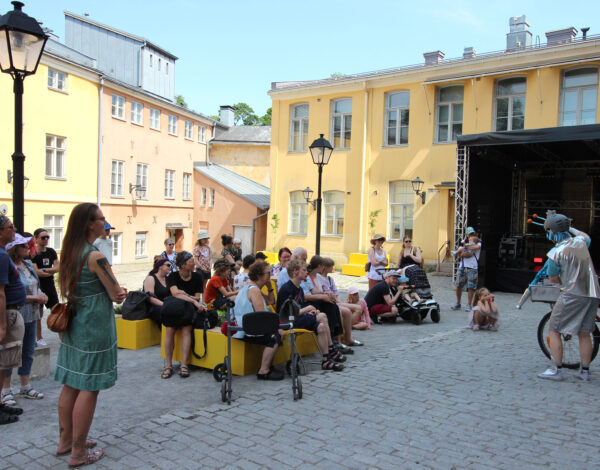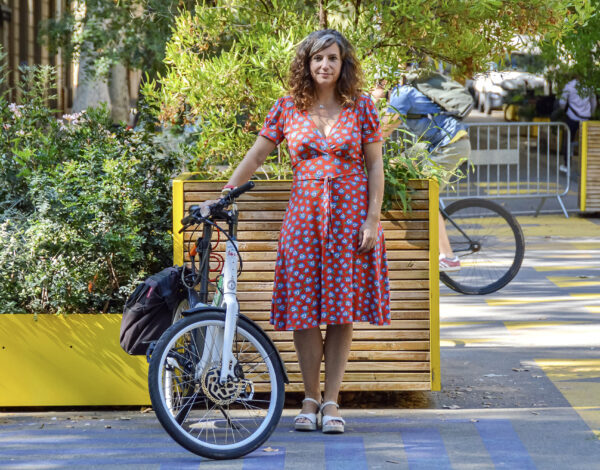Tell us a little bit about yourself?
I am Mustafa Sherif, 29 years of age, born in Bagdad, Iraq. I moved with my family to the city of Helsingborg in the south of Sweden when I was 15 years old. I am an urban planner and placemaker with focus on child friendly cities.
I love connecting with people and storytelling: to listen to their stories and to exchange ideas. This is the main reason for me to start my own international podcast called Urbanistica. The podcast is about how we create cities for people. I am really happy to see that I have listeners already from more than 140 countries.
Why did you become an urban designer? / Why do you want to work as an urban designer?
I am from Bagdad and we had to move to different areas, cities and countries because of the war in my country. This created an interest in me to explore the cities that we were immigrating to. I was thinking about the different functions, about my new school, thinking about the groceries, parks, other facilities that me and my family needed. I was also thinking about how wide the street was and if I could play football with the other kids there. This interest grew and grew and turned into a passion. I started to question why some areas and cities are not functioning? Why do some places feel unsafe? Why some streets were so dangerous? So, I wanted to change this.
I studied civil engineering with architecture, but I didn’t like it. I didn’t feel this was something I would love to do for the rest of my life, because the focus was mostly on material things and not so much on the human. I was always talking about the bigger scale when we did an architectural buildings project. I was always thinking about the common vision and story for people who are going to use the building.
I soon realized that urban planning and design is the scale that I love to work with. I studied for a master in Sustainable Urban Planning and Design at The Royal Institute of Technology in Stockholm and did exchange studies in Politecnico di Milano in Milan Italy. I LOVED IT!
For me the WHY to be an urban planner and designer is to create cities for people. I feel that my passion and mission in life is to transform our cities to more inclusive cities for all people, to welcome everyone no matter which background, gender, physical and mental health challenges people might have.
Gradually I started to focus more on child friendly cities, because I see that their voice is not always heard in the urban development process. Children are 30% of the world’s population and according to UNICEF convention children have the right to participate and be part of any decision that is related to them.
What is your favourite city and why/what can we learn from it?
I have 3 favorite cities:
Bagdad, Iraq: city life 24/7. There are always people out in streets, public spaces, markets and around the city. It’s because of the population, but also because of the density of buildings and public spaces in different areas.
What we can learn is density between buildings within an area, and also the variety of different functions within an area are important for city life. These aspects can help people to be outdoors and to walk or take a bike to different places and functions within a city.
Stockholm, Sweden: why? It’s because of the magical balance between the urban, nature and water. Also, how accessible are these elements to the people in Stockholm.
What we can learn is to find a harmony between blue and green structure together with the urban structure. Also creating access to people to be part of nature and near water within the city. Also, these accesses should be for free without charging people money.
Milano, Italy: Because of the design, art and fashion. In Milan I see many exhibitions and many public arts projects or even commercials in the form of art.
What we can learn is to give more space for art and culture in cities, by using facades, rooftops, public spaces, parking spaces, or even other spaces that we think it’s not attractive for having an art exhibition and other creative work.
How do you think placemaking can best contribute to urban development?
The best contribution is that the community together with the city and different actors write a common story and create a DNA of a place. It gives a place for democracy and creativity in urban development projects.
Do you see potential in solutions like Parky for developing urban environments?
First of all, I am a huge fan of Parky especially after launching the application (ParklyCreate) and making it easier to test digitally different models in a place.
I see potential solutions like Parky for developing urban environments: urban planning and design usually have a long process until we see an implementation of a plan or a design in an urban environment. What I like about solutions like Parky is that we can use them to program a place and give it a life and make it creative while we are waiting for a final result from a long urban planning or design process. So, making the most out of city space, not wasting it.
What is also good about this kind of solution is that the outdoor furniture is flexible. They can be used as a temporary solution but also as a permanent solution. Also, the flexibility is about reprograming a place by re-furniture the different “boxes/benches/Lego bricks”.
I want to mention that the variety of shapes, function, materials, and colors give us as urban designers more options and space to be creative in programming a place.
What is the most important topic at the moment for Swedish cities in regards to developing more liveable cities?
These are many topics that we as urban practitioners have been working on in recent years and will work more actively in the coming years. Suburbs and city centres are the most important topic from my perspective. Some suburbs are really isolated both physically and socially in some Swedish cities. A lot of work is happening now to connect suburbs to cities by infrastructures, public transportation, urban connection, green and social corridors, spreading functions to suburbs and not only to locate the development projects in the city centres.
Dream big! What does an ideal future city look and feel like?
I do not want to come up with an ideal image of a future city on my own, because I believe cities should be created and developed by many actors, city authorities and the fundamental part which are the communities and people. I think we must stop repeating the mistakes that cities and urban planners did in the past. White middle-aged man deciding over an area or city in a top-down manner and assuming many things about people’s way of living doesn’t create cities for all. We are now in many cities suffering from such a mindset and way of creating future cities.
I can share with you some aspects of my own perspective working with creating cities for people and aspects to think about when we develop future cities together:
– Accessibility in cities should be considered both: people with mental and physical challenges
– A well-connected network of public transportation, walk and bike paths
– Bringing back nature to cities and make it accessible for people
– Flexible public spaces for different genders, ages, background and activities
– Playful cities for children and adults alike


